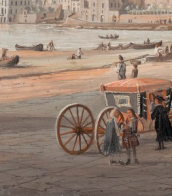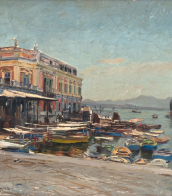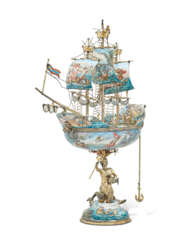mermaid painting











Francis Picabia, born Francis-Marie Martinez de Picabia, was a French avant-garde painter, poet, and typographist, whose work is celebrated for its diversity and innovation. His journey through various art movements, including Impressionism, Cubism, Dadaism, and Surrealism, showcases his refusal to be confined by any one style. Picabia's art is known for its eclectic nature, often blending mechanical elements with organic forms, thereby challenging traditional perceptions of art and beauty.
Picabia's significant contribution to the art world lies not just in his varied artistic output but also in his philosophical approach to creation. He believed in the freedom of expression, often using his art to critique societal norms and the art establishment itself. This rebellious spirit made him a pivotal figure in the Dada movement, where his works were celebrated for their irony and disdain for conventional art values.
Among his notable works, "Amorous Parade" and "I See Again in Memory My Dear Udnie" stand out, housed in prestigious institutions like the Museum of Modern Art in New York. These pieces exemplify Picabia's mastery over blending different elements of art movements, creating works that remain influential to this day. His legacy is not just in the pieces he created but also in his attitude towards art, encouraging future generations to challenge and redefine the boundaries of creativity.
For collectors and experts in art and antiques, Picabia's works represent not only significant artistic achievements but also valuable insights into the evolution of modern art. To stay informed about new product sales and auction events related to Francis Picabia, sign up for updates. This subscription is an essential resource for enthusiasts looking to enrich their collections with pieces from one of the most innovative artists of the 20th century.




Otto Friedrich Theodor Möller (Russian: Фёдор Антонович Моллер), a Russian academic painter of Baltic-German descent, was renowned for his detailed and expressive portraits, figure paintings, and genre scenes. Born in 1812 in Kronstadt, Saint Petersburg, Möller was deeply influenced by his mentor, Karl Briullov, at the Imperial Academy of Fine Arts. His journey as an artist was marked by a successful tenure in Italy, where he embraced the vibrant local culture and further honed his skills, particularly in portraying everyday Italian life and historical narratives .
Möller's artworks are celebrated for their clarity of composition and expressive color palette, traits he mastered under Briullov's guidance. His notable works, like the portrait of Nikolai Gogol, are admired for their lifelike representation and emotional depth. These paintings not only showcase his technical skill but also his ability to capture the subtle nuances of his subjects' personalities.
Möller's contributions to Russian art extend beyond his paintings. He was a professor and a significant figure at the Imperial Society for the Encouragement of the Arts, dedicating much of his later years to teaching and supporting fellow artists. His works are held in high esteem and continue to be featured in major Russian museums, including the Tretyakov Gallery and the Russian Museum.
For collectors and enthusiasts wishing to stay updated on exhibitions and auction events featuring Otto Friedrich Theodor Möller's works, signing up for newsletters and alerts from relevant art institutions can be highly beneficial. This ensures that you remain informed about opportunities to view or purchase his esteemed works.


Léon Spilliaert was a Belgian artist. He is known for his unique style of symbolism, with many of his works featuring dream-like landscapes, eerie still lifes, and enigmatic figures.
Spilliaert grew up in a wealthy family, and he initially studied architecture before turning to art. He was largely self-taught, and his work was heavily influenced by the Belgian symbolist movement, as well as the works of artists such as James Ensor and Edvard Munch.
Spilliaert was particularly interested in exploring the mysteries of the human psyche, and many of his works reflect a sense of unease or uncertainty. He often used strong contrasts of light and shadow to create a sense of drama and tension in his works, and his use of color was often muted and subdued.
Despite his success as an artist, Spilliaert was a deeply private individual, and he rarely exhibited his work during his lifetime. He continued to work throughout his life, however, producing a large body of haunting and enigmatic works that continue to captivate audiences today.




Beneš (Benedikt Julius) Knüpfer was a Czech artist, illustrator and teacher.


Gustave Moreau was a French artist and an important figure in the Symbolist movement. Jean Cassou called him "the Symbolist painter par excellence". He was an influential forerunner of symbolism in the visual arts in the 1860s, and at the height of the symbolist movement in the 1890s, he was among the most significant painters.



David Butler was an African American sculptor and painter from Good Hope, Louisiana. His style is epitomized by kinetic sculptures made from recycled tin or wood, which he embellished with saturated colors and geometric patterns. His work is now in the permanent collections of the Smithsonian American Art Museum, the American Folk Art Museum, and the Philadelphia Museum of Art.














































































